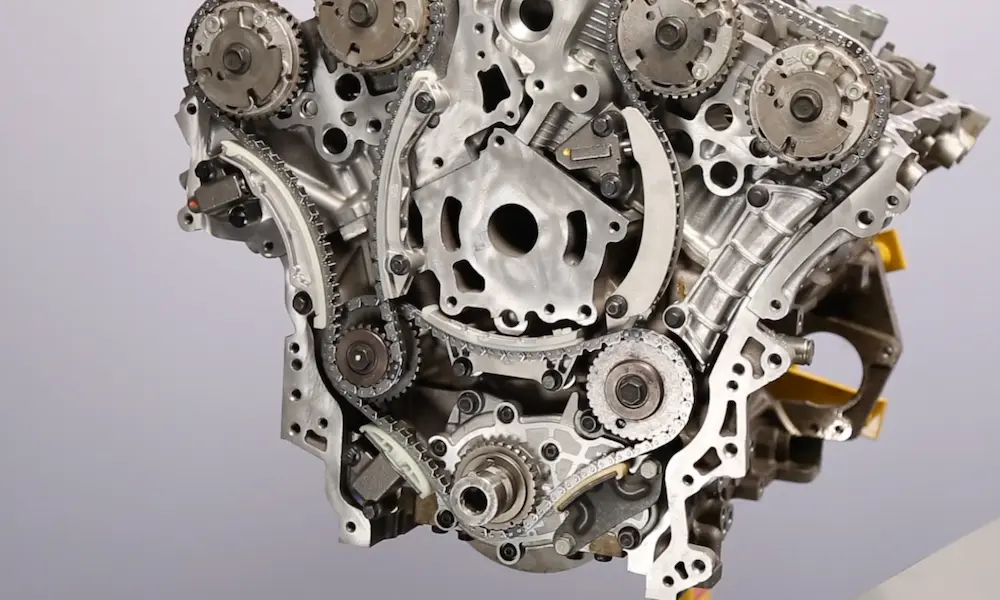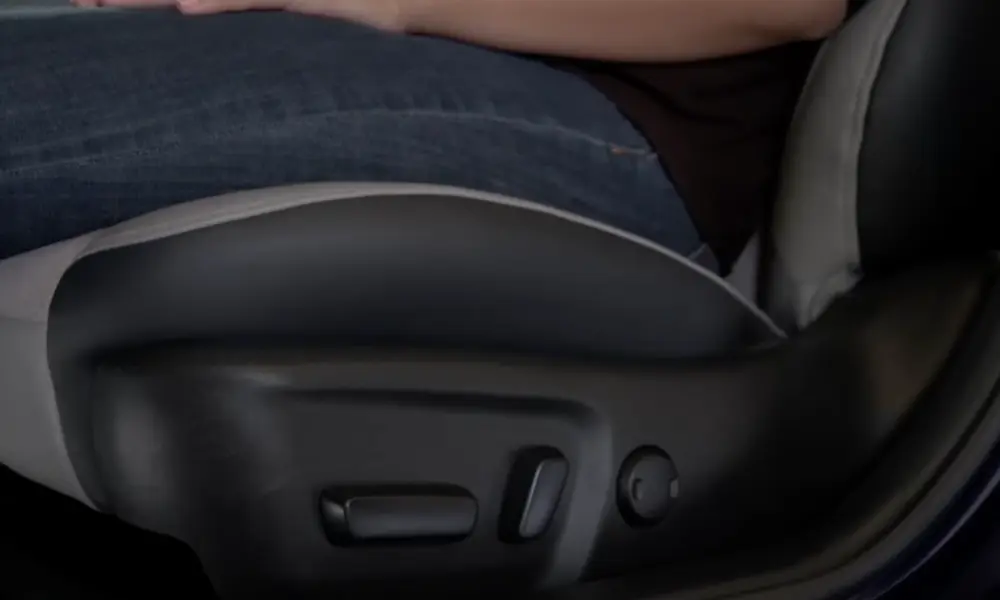Has your GM vehicle been shifting roughly lately? Maybe you’ve just had transmission work done, or perhaps you’ve noticed your car doesn’t drive quite like it used to. A transmission relearn procedure might be exactly what your vehicle needs to restore smooth shifting and optimal performance.
Modern GM transmissions rely on sophisticated computer systems that learn your driving habits over time. When you disconnect the battery or service the transmission, these learned patterns get wiped clean, leaving your transmission feeling confused and potentially causing poor shifting behavior.
Let’s explore exactly what a GM transmission relearn procedure is, when you need one, and how to perform it correctly on your specific GM vehicle.
What Is a Transmission Relearn Procedure?
A transmission relearn procedure resets and rebuilds the adaptive memory in your vehicle’s Transmission Control Module (TCM). This electronic brain controls how and when your transmission shifts gears.
Modern GM automatic transmissions use adaptive learning systems that constantly adjust shift timing, pressure, and feel based on:
- Your driving style (aggressive vs. gentle)
- Road conditions
- Vehicle load
- Temperature
- Wear patterns in the transmission
When this adaptive memory gets erased or corrupted, your transmission reverts to factory default settings, which might not match your vehicle’s current mechanical condition or your driving preferences.
Signs Your GM Transmission Needs a Relearn
Not sure if your transmission needs a relearn? Here are the telltale signs:
- Delayed or harsh shifting between gears
- Slipping when changing from 2nd to 3rd or 3rd to 4th gear
- Clunky feel during low-speed driving
- Jerky acceleration
- Transmission hesitation
- Shifting problems that started after:
- Battery disconnection
- Transmission fluid change
- Transmission repair
- TCM replacement or update
If you’ve noticed these symptoms, particularly after maintenance work, your GM vehicle likely needs to relearn its transmission behavior.
Basic Relearn Methods for GM Transmissions
Battery Disconnect Method
This is the simplest relearn procedure and works for many GM vehicles:
- Turn off the engine and remove the key
- Disconnect the negative battery terminal
- Wait at least 10 minutes (this ensures complete system reset)
- Reconnect the battery terminal
- Start the vehicle and allow it to idle for a few minutes
- Drive the vehicle through various conditions to help the TCM reestablish adaptive parameters
While simple, this method has drawbacks – it resets ALL electronic modules in your vehicle, not just the transmission. You’ll need to reset your radio presets, power seat memory, and other personalized settings.
Accelerator Pedal Position Relearn
Some GM models, like the Chevy Cruze, can initiate a transmission relearn using just the accelerator pedal:
- Turn the key to ON position (don’t start the engine)
- Press the accelerator pedal all the way to the floor and hold for 15 seconds
- Turn the key to OFF position
- Release the accelerator pedal
- Wait about 5 minutes for the system to reset
- Start the vehicle and drive normally
This procedure targets the transmission system more specifically than the battery disconnect method and can be a good first troubleshooting step.
Advanced Relearn Procedures for GM 8-Speed Transmissions
The 8L90 8-speed automatic transmission found in newer Corvettes, Camaros, and other performance GM vehicles requires a more sophisticated relearn procedure.
Fast Relearn Using HP Tuners
This method requires specialized equipment:
- Connect an HP Tuners interface to your vehicle’s OBD-II port
- Add the Fast Relearn Parameter ID to your monitoring screen
- Warm the transmission to between 167°F (75°C) and 185°F (85°C)
- With engine running and transmission in Drive (keep brake firmly applied)
- Initiate the Service Fast Learn procedure through the software
- Allow 5-8 minutes for the procedure to complete
- Turn off the vehicle for at least 2 minutes after completion
The temperature management is critical during this procedure – if the transmission gets too hot or too cold, the relearn will abort.
Temperature Management Tips for Fast Relearn
For successful completion of the Fast Relearn procedure:
- Start with a cold vehicle
- Power torque in reverse briefly to quickly warm the transmission
- Keep your foot firmly on the brake throughout the procedure
- Use external cooling fans if needed to prevent overheating
- Monitor temperature constantly – it must stay between 75°C and 85°C
If the procedure fails, try performing a global reset first:
- Disconnect both battery cables
- Touch them together away from the battery terminals to discharge the system
- Wait 10 minutes
- Reconnect the battery
- Try the Fast Relearn procedure again
Using Professional Diagnostic Tools
Required Tools for Complete Relearn Procedures
Some GM transmission functions, like clearing service interval messages or performing manufacturer-specific relearns, require professional equipment:
- GM Tech 2 Tool (dealer diagnostic system)
- VXDIAG VCX Nano (connects to Windows computer)
- Professional scan tools like Snap-On Modis Edge
These tools can access functions unavailable to basic OBD-II scanners. Despite common internet advice, certain transmission functions simply can’t be performed without proper equipment.
Example Procedure with Snap-On Diagnostic Tool
Here’s how a transmission service interval reset works on a 2013 Cadillac CTS using a Snap-On scanner:
- Connect the scanner to the vehicle’s OBD-II port
- Select the correct vehicle make/model (2013 Cadillac CTS 3.0)
- Navigate to the Transmission section
- Select Functional Tests
- Choose Reset Transmission Interval
- Follow on-screen prompts to complete the procedure
Different GM models will have slightly different menu paths, but the process is similar across the model range.
Extended Learning Procedures
Drive Cycle Methods for Complete Adaptation
After electronic reset procedures, your GM transmission needs to relearn through actual driving. While day-to-day driving will eventually accomplish this, you can accelerate the process:
- Perform the initial electronic reset
- Drive the vehicle at steady speeds around 45 mph for 10-15 minutes
- Perform 10-15 gentle stops from approximately 30 mph
- Drive through several cycles of acceleration and deceleration
- Include some moderate uphill and downhill driving if possible
- For models with manual shift capability, cycle through each gear at specified RPM ranges
This structured drive cycle approach forces the transmission to learn across its full operating range much faster than random daily driving.
Transmission Relearn for Specific GM Models
Different GM vehicles may have slightly different procedures. Here are some model-specific notes:
Chevrolet Silverado/GMC Sierra
For 6L80E/6L90E transmissions:
- Perform battery disconnect (at least 10 minutes)
- Focus on gentle driving for the first 100 miles
- Avoid towing until relearn is complete
- Pay special attention to shift quality during 2-3 and 3-4 shifts
Chevrolet Cruze/Malibu
The accelerator pedal position method works well for these models. After performing it:
- Drive at highway speeds (55-65 mph) for at least 20 minutes
- Perform 15-20 moderate stops from approximately 30 mph
- Include city driving with frequent stops and starts
Corvette/Camaro (8L90 Transmission)
These high-performance models benefit most from the HP Tuners Fast Relearn procedure. If you don’t have access to the equipment:
- Perform the battery disconnect method
- Drive in manual mode, holding each gear to learn proper shift timing
- Include some moderate performance driving once the basic patterns are established
Best Practices for Transmission Relearn
When to Perform a Relearn
It’s best to perform a transmission relearn:
- Immediately after changing transmission fluid
- After any transmission-related repairs
- Following TCM updates or replacement
- When battery has been disconnected or replaced
- When experiencing deteriorating shift quality
- After electrical system work that might have reset the TCM
Don’t wait until problems become severe – early intervention yields better results.
Potential Risks and Limitations
While relearn procedures are generally safe, be aware of these considerations:
- High-mileage vehicles may have worn components that depend on modified shift parameters
- Resetting to factory defaults might temporarily improve shifting but could accelerate wear on already compromised parts
- Vehicles with significant mechanical issues need repairs first – a relearn won’t fix mechanical problems
- Some procedures require maintaining specific transmission temperatures, which can be difficult without proper equipment
Comparing Relearn Methods
| Method | Equipment Needed | Time Required | Skill Level | Best For |
|---|---|---|---|---|
| Battery Disconnect | None | 10 min + driving time | Beginner | Basic resets, older GM models |
| Accelerator Pedal | None | 20 min + driving time | Beginner | Cruze, Malibu, basic issues |
| HP Tuners Fast Relearn | HP Tuners interface, laptop | 1-2 hours | Advanced | 8L90/8L45 transmissions |
| Professional Scan Tool | Dealer-level diagnostic tool | 30-60 min | Professional | Service interval resets, complex issues |
| Drive Cycle Only | None | 1-2 hours of specific driving | Intermediate | Minor adaptive issues |
Service Costs vs. DIY
If you’re considering professional help versus doing it yourself:
| Service Option | Approximate Cost | Pros | Cons |
|---|---|---|---|
| DIY Basic (Battery/Pedal) | Free | No cost, immediate | Limited effectiveness for complex issues |
| DIY Advanced (HP Tuners) | $650+ for equipment | Complete control, reusable | High initial cost, learning curve |
| Independent Mechanic | $75-150 | Professional equipment, experience | Cost, appointment needed |
| Dealership Service | $150-250 | Factory training, proper equipment | Highest cost, potential waiting time |
Final Thoughts on GM Transmission Relearn Procedures
A proper transmission relearn procedure can make a dramatic difference in how your GM vehicle shifts and performs. The key is matching the right procedure to your specific model and situation.
For casual owners experiencing minor issues after maintenance, the basic methods may be sufficient. Performance vehicle owners or those with persistent problems might need the more advanced procedures.
Remember that electronic resets are just the beginning – your transmission needs actual driving experience to fully adapt to your driving style. Be patient during this process, as it can take anywhere from 50 to 200 miles of varied driving for the transmission to completely relearn optimal shifting patterns.
If transmission problems persist despite relearn attempts, you may have mechanical issues that require professional diagnosis. No relearn procedure can fix worn clutches, damaged valve bodies, or failing solenoids.










